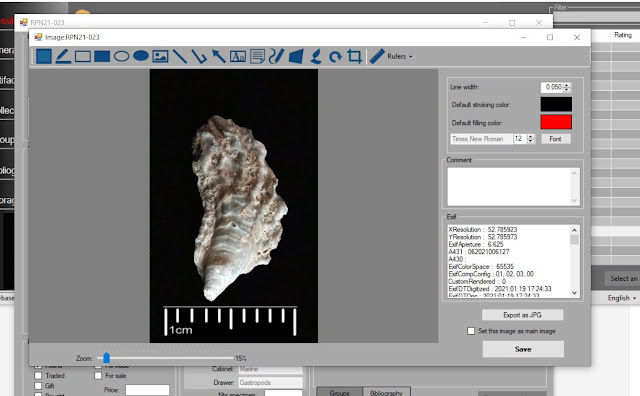Documentation Part 2: Test Driving Trilobase
In my last post, I told you all about why one should document their fossil (or mineral/artifact/natural history) collection. Today I get into a bit more detail on how.
As I mentioned before, I started documenting my collection by way of drawings and photos in physical journals. However, everything got backlogged. It took too much time to make a scrapbook style journal that included everything I brought home from each trip.
Where I volunteer, we use Specify, a subscription-based database intended for institutional use. It allows museums to create shareable databases of their natural history holdings including taxonomy, provenance, notes on how to find the location of origin, preservation type, photos, and just about anything else one would need to know about the specimen. And, it's eminently editable as taxonomy changes, better pictures are taken, etc. It's wonderful, but it's not appropriate for a single, relatively small, private collection.
I started using what I had on hand. I made spread sheets at home with all my data, plus a separate folder of photographs whose file names were the serial numbers for the specimens. It works alright. It's free and doesn't eat space on my hard drive for extra software. However, it is very cumbersome to go back and forth between folders when I want to look something up.
After six months or so of thinking about this, looking online unsuccessfully for something more to my scale, and discussing with my developer hubby the possibility of designing our own, I saw mention on a forum about Trilobase. The Trilobase database was created by a fossil collector and IT Developer specifically for managing small, private fossil, mineral, and artifact collections like mine. The free trial is a full version of the software with a limit of 100 specimen entries. That covers one or two of the three field trips I made last month, anyway. I gave it whirl this week.
 |
| Trilobase's fossil specimen form field |
The program has separate sections for fossils, minerals, artifacts, collecting sites, bibliography, groups and storage. Once collecting sites and bibliographic notes are added to the database, individual sites and references can be added by drag-and-drop into specimen entries. The Groups page allows you to create search tags with open-ended fields to make your own name and sorting system. The Storage tab is a virtual warehouse with "rooms," "cabinets" and "drawers" that appear as a tiered list on the screen. Specimens are added to the drawers by dragging and dropping the drawer name into the specimen's form field.
 |
| I used Trilobase's photo editor to add a scale bar to this oyster photo. |


Comments
Post a Comment